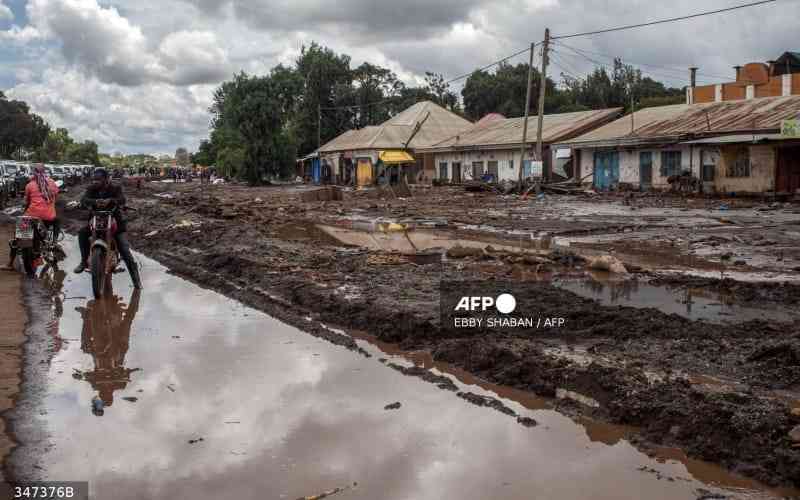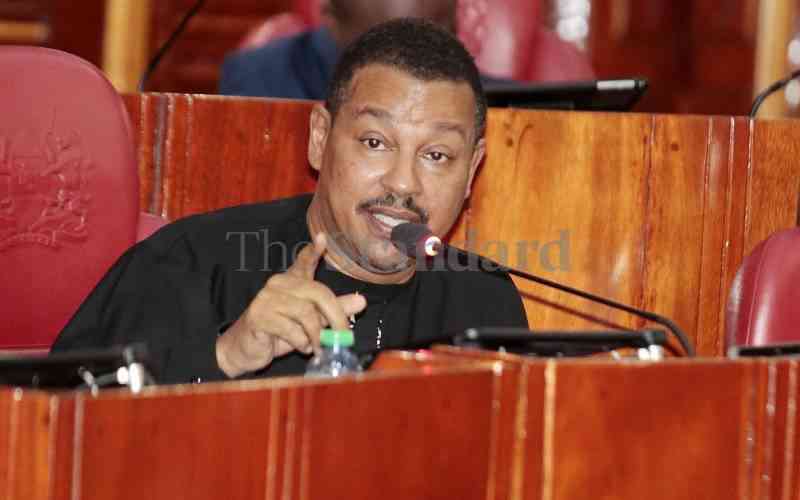By Juma Kwayera
Kenyan forces launched a three-pronged attack on Kismayu in an effort to flush out Al Shabaab militants from their last stronghold in Somalia.
A military spokesman said a large part of the city had fallen into Kenyan hands “without resistance” after rapid pre-dawn attacks from the north, the south, and from the Indian Ocean. President Kibaki, the Commander-in-Chief of Kenya’s Armed Forces, released a message in the afternoon praising KDF troops for the capture of Kismayu.
There were, however, reports that fighting continued as remnants of Al Shabaab prepare to make their last stand outside the port city.
News of Kismayu’s capture has sent Kenyans into celebration, even as KDF warns this is not the end of the campaign against Al Shabaab. There was little resistance to the long-awaited ground assault by forces massed under the African Union Mission in Somalia (Amisom).
After a four-month siege of the port city, and days of naval bombardment, Kenyan troops under Amisom made a beach landing yesterday under the cover of darkness. Others advanced on the city overland from the north and south.
A small team at the head of a snake-like formation inserted at the beach rapidly entered the city and took up positions before any militants could react to the surprise attack. The amphibious assault was supported by aerial bombardment of suspected Al Shabaab targets. Within hours, having met little resistance, KDF officials were claiming control of most of the port city.
KDF Spokesman Maj Emmanuel Chirchir says the port city fell into Amisom hands by 2am Friday; about two hours after the assault began.
“We launched an amphibious operation in Kismayu just after midnight and by 01:00 hours, our troops had pushed far into the town,” he said. “We have captured more than three-quarters of the town. During the surprise attack we met with little resistance. We have asked the people (living in the city) not to interact with Al Shabaab.”
Neutralise targets
As at the time he spoke to The Standard On Saturday, he had not received reports of any casualties. Reuters and BBC quoted various sources saying shelling and fighting could be heard outside the city.
Amisom’s Ugandan commander independently confirmed the first wave of troops had entered the city, and said more were on the way.
“Operations are ongoing to neutralise specific Al Shabaab?targets in Kismayu,” Amisom Force Commander Lieutenant-General Andrew Gutti said, in a media statement. “We urge all fighters to lay down their arms. We have assured them of their safety if they give themselves up.”
The fall of Kismayu followed four months of planning involving top military commanders of troop contributing countries Kenya, Uganda, Burundi, Djibouti, and Sierra Leone. The officers have been meeting at the Kenya Defence College in Karen, Nairobi, since August, to plan the seizure of the city and discuss how to fill the power vacuum that would be created by Al Shabaab’s defeat.
The challenge was to co-ordinate an attack with naval, ground and air forces without “collateral damage” (killing civilians by mistake) or “blue-on-blue encounters” (friendly fire).
Stay informed. Subscribe to our newsletter
A Kenyan military officer based at the Amisom headquarters in Mogadishu provided details of how the operation was planned and executed. His account was corroborated by Department of Defence sources.
“KDF employed a ‘choke strategy’ during which Kismayu was under siege from all directions,” explained the officer, who cannot be identified because he lacks the authority to speak for Amisom. “For more than four months, there was no movement of goods into and out of the port city. The intention was to weaken Al Shabaab by reducing their capacity to attack or resist.”
Wednesday saw the naval bombardment of enemy gun positions on the port’s jetty to clear the way for beach landing. During the Friday predawn strike, KDF launched a three-pronged assault using aerial, ground, and naval forces.
Using fast-moving amphibious craft, a vanguard (the leading part of a military formation) of crack soldiers secured a beachhead then led the march into Kismayu.
According to our source, the ‘snake’ formation — a small team going in first as the ‘head’ followed by a longer ‘tail’ — caught residents of Kismayu by surprise, giving Al Shabaab little time to mount resistance. Two other groups advanced on the city from the north and south, heading to pre-assigned targets under the cover of darkness.
“The idea was to cut off the city’s southern airfield, an open corridor used by Al Shabaab to move their arsenal, before capturing other key positions where the militia operates,” the officer disclosed. Four naval ships and several helicopter gunships were involved in the attacks.
“This is a game changer for the people of Somalia,” President Kibaki said in a statement yesterday. He said Kenya would participate in the reconstruction of Somalia and appealed to its people to embrace reconciliation. He, however, warned “extremist, terrorist and fundamentalist forces” may try to destabilise the country and the region.
Telltale signs
There had been telltale signs that a major military strike in southern Somalia was in the offing. A week ago, KDF fighter jets bombed installations at the airport, flattening an armoury and warehouse used by Islamist extremists.
In the same week, DoD declared October 14 a KDF Day, saying preparations were on to commemorate the first anniversary since Kenyan tanks rolled into Somalia. Asked if the celebration of the KDF were a pointer to the imminent fall of Kismayu, KDF spokesman Col Cyrus Oguna said the day was set aside to reflect on the first time since Independence Kenyan soldiers had crossed into a foreign territory to fight in a war. Even as Col Oguna played down the significance of the KDF Day, an officer of the rank of a captain had told The Standard On Saturday that a team of senior officers were preparing to fly out to Kismayu to “monitor” progress in the war on Al Shabaab.
DoD photos released to the media yesterday shows Chief of the Defence Forces General Julius Karangi with other soldiers in Kismayu. Gen Karangi took charge of KDF last year, just months before KDF forces entered Somalia in “hot pursuit” of Al Shabaab. Three weeks prior to the attack, the commander of KDF troops in Amisom; Maj-Gen SN Karanja had been non-committal on his troops’ advance. “Soon. Very soon,” he told The Standard On Saturday in Mogadishu.
Despite the losses, Al Shabaab still maintained they were in control of the port city. A commander of the militia group quoted by BBC admitted Amisom troops were in Kismayu, but denied Al Shabaab had lost the fight for the city. Sheik Mohamed Abu-Fatuma, was quoted as saying,
“The enemy (KDF) has deployed hundreds of soldiers in the coast late last night and the mujahedeen fighters are engaging them in heavy fighting. God willing, they would be defeated.”
Town residents also quoted by BBC confirmed the presence of KDF outside the city centre and that Al Shabaab had fled.
In an interview with our sister station KTN, Col Oguna said in the lead-up to the seizure of Kismayu, KDF backed by the Somali National Army, the Ras Kamboni Brigade and the Ahlu wal Jumma Sunna, routed Al Shabaab from Kismayu. He said on Thursday that the operation to liberate Kismayu had taken into account measures to avoid “collateral damage”.
Kenya deployed troops in Somalia in October, last year, hoping to mop up the Al Shabaab fighters in the south to stabilise the country that has been at war with itself since 1991. Kismayu is the commercial hub of the lawless Somalia and key to revenue generation that has sustained Al Shabaab’s resistance in Sector II, which is the region generally known as ‘Jubaland’.
 The Standard Group Plc is a
multi-media organization with investments in media platforms spanning newspaper
print operations, television, radio broadcasting, digital and online services. The
Standard Group is recognized as a leading multi-media house in Kenya with a key
influence in matters of national and international interest.
The Standard Group Plc is a
multi-media organization with investments in media platforms spanning newspaper
print operations, television, radio broadcasting, digital and online services. The
Standard Group is recognized as a leading multi-media house in Kenya with a key
influence in matters of national and international interest.
 The Standard Group Plc is a
multi-media organization with investments in media platforms spanning newspaper
print operations, television, radio broadcasting, digital and online services. The
Standard Group is recognized as a leading multi-media house in Kenya with a key
influence in matters of national and international interest.
The Standard Group Plc is a
multi-media organization with investments in media platforms spanning newspaper
print operations, television, radio broadcasting, digital and online services. The
Standard Group is recognized as a leading multi-media house in Kenya with a key
influence in matters of national and international interest.







